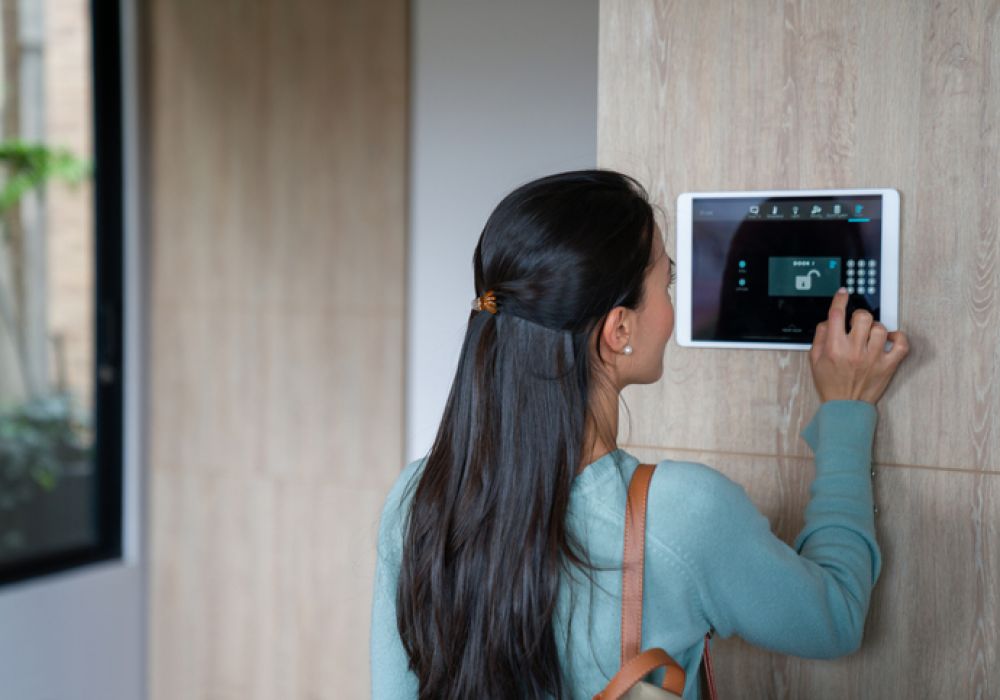5 Things You Should Know About 5G for 2024

Reading time: 9 minutes
Innovations abound with 5G, from the deployment of search-and-rescue drones empowered by 5G connectivity to the staggering 43 terabytes of data usage by Formula 1 Crypto.com Miami Grand Prix attendees. The transformative influence of technologies like network virtualization further underscores the dynamic landscape of 5G.
The rapid expansion of 5G capabilities presents a challenge to keeping pace with the evolving landscape. Yet, in the midst of this mind-blowingly swift progress, one constant emerges: improved performance, reliable connectivity and heightened security in diverse locations.
Looking ahead to 2024, it becomes crucial to know and understand certain key facets of 5G wireless technology. Here, PureTalk presents five of those key facets!

1. 5G is Significantly Different from Earlier Technology
The game-changing nature of 5G stems from its unparalleled speed and utility. In contrast to 4G, 5G harnesses a broader spectrum, facilitating increased data transmission and notably reduced latency.
This expanded, enhanced mobile broadband capacity creates avenues for the emergence of novel applications and services, unlocking unprecedented possibilities.
According to ZD Net, “such super-fast computing means real-time capabilities for applications such as AI-driven speech, written word, or computer-vision algorithms.”

2. 5G Offers Tremendous Benefits to Consumers
5G brings forth a multitude of advantages, with primary emphasis on reduced latency, expanded bandwidth, and enhanced capacity.
However, its most transformative impact extends beyond these fundamentals to the realm of connectivity. With a more robust and dependable network, individuals can engage in simultaneous digital experiences and communication without the disruptions prevalent in 4G, such as lag and buffering.
Beware when traveling to the UK, though. According to the Financial Times, “Mobile users in Britain were hit by the slowest average 5G download speeds of any G7 country in 2023. UK mobile users had an average 5G download speed of 118.2 megabits per second," compared with average 5G download speeds in the U.S. clocking in at 186.3Mbps according to OpenSignal.

This ushering in of a new era in network connectivity creates an untapped market for technological innovations, benefiting both end-users and enterprises alike.
Some key benefits at a glance include:
Seamless streaming and gaming experiences with minimal lag.
Safer urban environments through the integration of smart, interconnected vehicles.
Near-instantaneous access to a wide array of online files.
Compact devices that shift hardware requirements to remote servers.
Emergence of new products and applications demanding ultrafast speeds.
Reliable internet access even in remote and traditionally underserved areas.

In addition, 5G offers enhanced security compared to earlier generations of mobile broadband and is arguably more secure and configurable than WiFi.
The compatibility with eSIM provisioning is a key factor in this advantage. Through eSIM provisioning, 5G enables mobile operators to remotely activate eSIM cards in connected objects like IoT devices. This feature grants greater control over mobile devices compared to WiFi, as WiFi cannot be utilized for eSIM activation.

The ability for remote provisioning empowers network overseers to swiftly and effortlessly configure the devices connected to the 5G network.
3. 5G has Many Uses
While smartphones undeniably dominate the landscape of mobile communication, the scope of 5G extends far beyond these ubiquitous devices. The focal points of a 5G network lie in ultrafast connections and minimal delays, impacting various applications beyond the realm of mobile phones.
The significance becomes apparent in scenarios where reducing delays is critical, such as with the integration of interconnected devices. One notable application involves augmented reality devices and virtual reality headsets, which demand substantial bandwidth and swift internet communication to deliver their immersive experiences. Even slight latency can profoundly affect the perceived realism within these various virtual and augmented reality environments.

Similarly, devices requiring quick responses, like autonomous cars navigating to prevent sudden collisions, remotely operated hardware, and robotic systems following remote controllers, benefit significantly from the low-latency and high-bandwidth capabilities of 5G.
Yet, 5G is not confined to specialized applications alone; it enhances connectivity across everyday devices. Whether gaming, making video calls, streaming movies, downloading files, sharing HD and 4K media, receiving real-time traffic updates, or engaging in vlogging, 5G's speed elevates the user experience.

Notably, its swiftness opens the door to the possibility of entirely replacing high-speed wired connections through fixed wireless access.
4. How 5G Works
5G, similar to other wireless communication methods, transmits and receives data within the radio spectrum. However, in contrast to the familiar landscape of 4G, this advanced network leverages higher frequencies, specifically millimeter waves, within the radio spectrum to achieve unprecedented speeds.
Despite the notable speed advantage, there is a trade-off.
Higher frequencies, being more susceptible to interference from elements such as trees, buildings, and even smaller obstacles like individuals, necessitate the strategic placement of small cell towers to propagate the network effectively throughout urban areas.

It's essential to note that not all mobile network operators adopt the same approach. While some companies utilize 5G on the lower end of the radio spectrum, allowing cell towers to cover larger areas and penetrate walls, the compromise involves comparatively slower speeds.
5. 5G Can Support So Many Devices, It's Almost Unimaginable
At a baseline, 5G must accommodate a staggering 1 million devices per square kilometer (0.386 square miles). This implies that within this spatial allocation, the network can seamlessly connect over 1 million devices to the internet simultaneously.
While this might initially appear challenging to grasp, particularly in cities with the highest population density, such as Manila, Philippines, and Mumbai, India, where populations range from 70,000 to 110,000 people per square mile, it's crucial to recognize that 5G isn't merely catering to one or two devices per person.

The demand extends to encompass everyone's smartwatches, all connected vehicles in the vicinity, smart locks in nearby residences, wearables, and any other existing or forthcoming device requiring network connectivity.
The versatility of 5G cells is noteworthy, as they can communicate with an array of devices, ranging from those used by stationary individuals to those in high-speed vehicles like trains traveling at speeds of up to 500 km/h (310 mph).
Tailoring to diverse needs, different areas necessitate distinct mobile base stations to accommodate varying speeds. For instance, a smaller city with users predominantly traveling by car and on foot may not require the same base stations as a larger city equipped with a high-speed public transport system.
To Sum Up…
To sum up and review (although we promise that there will not be a test later!), following are the 5 key things consumers should know about 5G technology:
Faster Speeds:
5G, or fifth-generation technology, promises significantly faster data speeds compared to its predecessor, 4G LTE. This increased speed is essential for handling the growing demands of data-intensive applications like streaming high-definition videos, using virtual reality experiences, and augmented reality.
Low Latency:
5G networks aim to provide lower latency, which is the time it takes for data to travel from the source to the destination. Reduced latency is critical for applications that require real-time responsiveness, such as online gaming, autonomous vehicles, and remote surgery.
Increased Capacity:
5G networks are designed to support a higher number of connected devices simultaneously. This enhanced capacity is essential for the expanding Internet of Things (IoT) ecosystem, where numerous smart devices, from smart home appliances to industrial sensors, require reliable and fast connectivity.

Different Frequency Bands:
5G operates on a variety of frequency bands, including low-band, mid-band, and high-band (millimeter-wave). Each band has its advantages and challenges. Low-band offers wider coverage, while high-band provides higher speeds but with shorter range and potential obstacles. The combination of these bands allows for a more versatile and efficient network.
Deployment Challenges:
Implementing 5G networks involves overcoming several challenges. The higher frequency bands have shorter ranges and can be affected by obstacles like buildings and trees. As a result, the deployment of 5G requires a dense network of small cells and antennas, leading to increased infrastructure requirements and potential concerns about aesthetics and environmental impact.
As market after market switches on 5G, we are at a truly momentous point in time. No previous generation of mobile technology has had the potential to drive economic growth to the extent that 5G promises. It goes beyond connecting people to fully realizing the Internet of Things (IoT) and the fourth industrial revolution.
At PureTalk, we're as committed to keeping our subscribers up to date on all the latest advancements in wireless technology as we are to providing great service at a fair price. For details on our family and seniors plans, as well as our devices, visit PureTalk.com!
Posted 7 months ago
